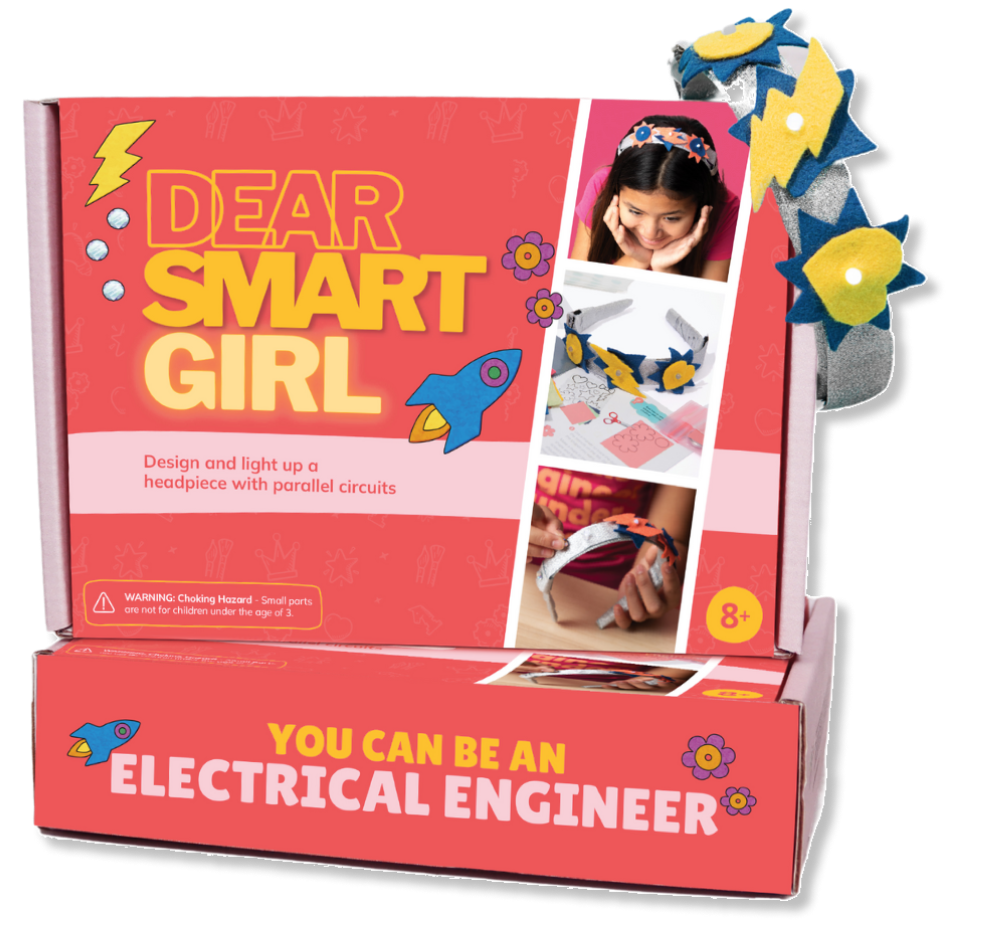
Polymer Clay Collection Digital Guide

Product Designer STEM Kit
Hey there, Smart Girl! Welcome to the digital activity guide. Ready to become an product designer? Click the tabs below and explore our video demonstration, and other additional resources.

Polymer Clay Collection Digital Guide
Product Designer STEM Kit
Hey there, Smart Girl! Welcome to the digital activity guide. Ready to become a product designer? Click the tabs below and explore our video demonstration and other additional resources.
Video Demo
Watch our video demo, complete with written instructions.

Introduction
Hi there!
My name is Ms. Ariani, the Head Tinkerer of Ingenia. Welcome to The Charming Treasures Gift Shop where I spend a lot of time brainstorming new product ideas and bringing them to life for fun and for the people of Ingenia. You have come at just the right time. I have been up to my ears in projects and I need the extra help.
The gift shop is in need of a new product collection to sell to visitors as a reminder of their time in Ingenia. That is where you come in. I need your help to design three different products that you will create using polymer clay. Now, don’t look so shocked! It is an important job, but a fairly easy one. I have selected you as my Product Designer because of your creativity and amazing abilities! Don’t worry, I have included all the materials you will need to design your product collection. I will also guide you through the design process.
Project Review
To create a new product collection, you will need to know about polymer clay and color theory. If you want to earn your designer badge (and maybe even become a Product Designer like me one day), creating polymer clay products is a great place to start.
First, please check that you have the following materials that I have prepared:
- Polymer clay
- Sculpting tool kit
- Shape cutters (5)
- Popsicle sticks (2)
- Mica powder (6 colors)
- Hardware (3 necklace cords, 3 connector clasps, 2 sets of studs with earring backs, 2 rings, 2 hair clips, 1 magnet strip)
- Parchment paper (2)
- Glue dots (8)
Are they all there? Good. I will tell you more about your task.
Activity Booklet
Understanding Polymer Clay and Color Theory
You will be using polymer clay to create your product line so let’s learn a little bit about it. Polymer clay is made from PVC and plasticizer. PVC is a type of plastic commonly used as a water pipe underneath your kitchen sink and plasticizer makes the PVC softer and more flexible. When the PVC is mixed with the plasticizer, the substance is called plastisol. Other substances are added to the plastisol to hold it together and give the polymer clay its other characteristics such as color.
Polymer clay was created by scientists to be capable of being easily molded. So, polymer clay is essentially a moldable plastic. You can’t find polymer clay in nature. It is oil-based, so it doesn’t dry out. You can even use pigments and dyes to change the color of it. The polymer clay hardens after putting it in the oven — this is called the curing process. Once you finish baking the polymer clay, it is cured, fully waterproof, and durable. After, you will attach the cured polymer clay to the hardware to make fun products.
Following along so far? Great!
Color theory plays a major role in product design. Color theory is both the science and art of using color. Colors can create different types of feelings depending on the colors they use. Color theory allows us to understand how to make use of these colors in order to create the desired emotions.
The Meaning of Colors:
- orange = confidence or excitement
- red = love or alert
- yellow = happiness or creativity
- blue = smart or trust
- green = nature or growth
- purple = independence or ambition
A color scheme is a particular combination of colors used for artistic and design needs.
- Monochromatic is a color scheme using various shades of only one, single color.
- Analogous is a color scheme using two or more colors that are side by side on the color wheel.
- Complementary is a color scheme using colors that are directly opposite each other on the color wheel
On the color wheel, the warm colors are red, yellow, and orange. Warm colors are said to excite and energize the viewer. The cool colors are green, purple, and blue. Cool colors are said to calm and relax the viewer.
Based on market research, I have included the six primary and secondary colors in the kit because they perform the best for the customers of Ingenia’s Charming Treasures Gift Shop. You can even mix colors if you want! It is completely up to you.
You will now use your understanding of polymer clay and color theory to create your own personalized products! If you’re still uneasy about making a product collection for the first time, don’t be! I‘ll guide you every step of the way. Find an open, flat area and assemble your materials.
You Did It!
You finished the new polymer clay product collection for Ingenia’s Charming Treasures Gift Shop. All of the products are beautiful! I am very proud of you. I hope you enjoyed learning about polymer clay and color theory and how to use them in real life. Try experimenting with your new skills to create other fun things!
Of course, remember to stay safe when baking your polymer clay products and have an adult nearby to make sure you’re safe.
That’s all I have for you to do right now. Take a break. I‘m sure I‘ll have something for you to do next.
Until next time,
Head Engineer Ariani
engineer
scientist
designer
maker
explorer
founder
engineer
scientist
designer
maker
explorer
founder
engineer
scientist
designer
maker
explorer
founder
Be the First to Know
about new products, offerings, and exclusive content




